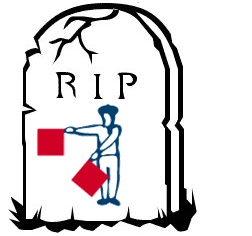
Every now and then I see someone ask how they can be sure that the applications available on the SDL OpenExchange (now RWS AppStore) are safe to use? This is a very valid question and I read in a whitepaper from Adobe, where they quoted a PwC survey carried out in 2013, that nearly 30% of respondents from 123 countries claimed financial losses due to a software related security incident.
Controlling the security of our own applications, and ensuring we have proper controls in place is one thing… but how do we make sure that applications that have been developed by others, for installation and use with our products via the OpenExchange, are similarly controlled?
Continue reading “SDL OpenExchange (now RWS AppStore) Application Security”


 Studio 2014, whilst containing many significant user enhancements, also brought with it some significant additions to the technology platform available to developers.
Studio 2014, whilst containing many significant user enhancements, also brought with it some significant additions to the technology platform available to developers. The launch of SDL Trados Studio 2014 this month brings with it the news that SDL Trados 2007 Suite will no longer be supported from the end of this year. I don’t think this will come as a surprise to anyone as SDL had already ceased to support SDL Trados 2007 since the end of 2012, and with the releases of the 2009, 2011 and now 2014 versions of SDL Trados Studio it’s inevitable that the 2007 Suite version will follow suit.
The launch of SDL Trados Studio 2014 this month brings with it the news that SDL Trados 2007 Suite will no longer be supported from the end of this year. I don’t think this will come as a surprise to anyone as SDL had already ceased to support SDL Trados 2007 since the end of 2012, and with the releases of the 2009, 2011 and now 2014 versions of SDL Trados Studio it’s inevitable that the 2007 Suite version will follow suit. The release of Studio 2014 will bring a number of new OpenExchange applications to the App Store. One of these is already becoming well known based on the name alone… the SDLXLIFF Toolkit! The name suggests this is a tool for working with an SDLXLIFF and being able to take it to pieces and interact with all of it’s components… and this is probably a good explanation of what it actually does.
The release of Studio 2014 will bring a number of new OpenExchange applications to the App Store. One of these is already becoming well known based on the name alone… the SDLXLIFF Toolkit! The name suggests this is a tool for working with an SDLXLIFF and being able to take it to pieces and interact with all of it’s components… and this is probably a good explanation of what it actually does. Today I decided to share a Freeware Application I came across whilst trying to find a neat resolution to a problem posed by a Translator using Studio. I know many of you don’t like to use Freeware so I’m not saying anything about this tool other than I think it’s great, and if you’re happy to install it then I’m pleased to have passed on awareness of this tool to you. I am not endorsing it in any way other than that! If you have a policy not to install Freeware tools and still like the idea then I’m sure there are plenty of paid for applications that do a similar job. This tool is called
Today I decided to share a Freeware Application I came across whilst trying to find a neat resolution to a problem posed by a Translator using Studio. I know many of you don’t like to use Freeware so I’m not saying anything about this tool other than I think it’s great, and if you’re happy to install it then I’m pleased to have passed on awareness of this tool to you. I am not endorsing it in any way other than that! If you have a policy not to install Freeware tools and still like the idea then I’m sure there are plenty of paid for applications that do a similar job. This tool is called  This application, free on the
This application, free on the  The PowerShell Toolkit… that’s what!
The PowerShell Toolkit… that’s what! So now let’s flip the process on its head!
So now let’s flip the process on its head! A strange title, and a stranger image with a pair of zebras and a road, but in keeping with the
A strange title, and a stranger image with a pair of zebras and a road, but in keeping with the